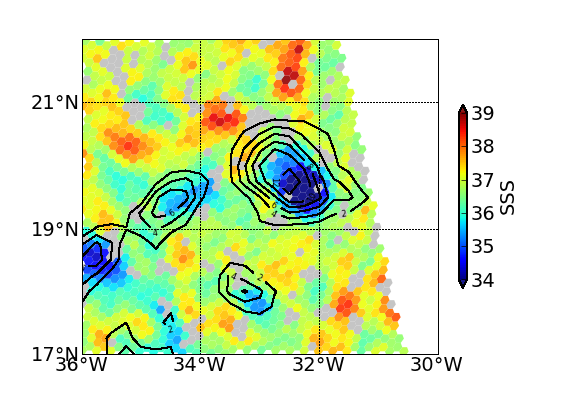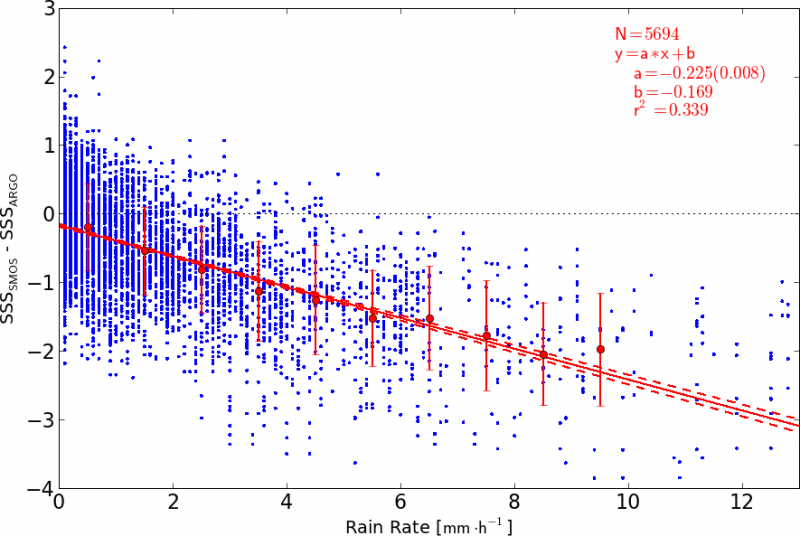Rain events in the Tropical Pacific and Atlantic from SMOS
SMOS+SOS researchers at LOCEAN are working on evaluating rain impact on sea surface salinity measured by SMOS. For the first time SMOS, allows to map the effect of rain cells on the sea surface salinity at 43 km resolution. As an example, Figure 1 illustrates the spatial variability of SMOS salinity associated with the rain rate in the Tropical Atlantic. It is expected that just after a rain event, the salinity of the top centimeter as measured by SMOS will decrease with respect to the salinity measured in situ at a few meters depth under non rainy conditions, as seen in Figure 2. In both cases, the observed variability of SMOS SSS linked to rain is clear (about 0.2 pss mm-1 hr).

Figure 1: SMOS SSS variability in the Tropical Atlantic (17°N-22°N) on 26 August 2012. Also shown are contours of satellite SSM/I rain rate between 2 and 12 mm/hr for the same day.
Although rain could also affect the physics of measurement in particular by changing sea surface roughness, preliminary studies indicate that more than 70% of this variability is real, while other effects (roughness, atmosphere) are relatively small. This work will be extended in the future using in situ measurements made at less than 50cm from the sea surface.

Figure 2: SMOS Level 2 SSS minus Argo SSS (at 10 days interval) versus SSM/I rain rate within [-30minutes;+15minutes] of SMOS pass in the Intertropical Convergence Zone of the Pacific Ocean.
Boutin, J., N. Martin, G. Reverdin, S. Morisset, X. Yin, L. Centurioni, and N. Reul, 2014, Sea Surface Salinity under rain cells: SMOS satellite and in-situ drifters observations, in revision for Journal Geophys. Res.-Oceans.
Boutin, J., N. Martin, G. Reverdin, X. Yin and F. Gaillard, 2013, Sea surface freshening inferred from SMOS and ARGO salinity: Impact of rain, Ocean Sci., 9, 183-192, doi:10.5194/os-9-183-2013.







